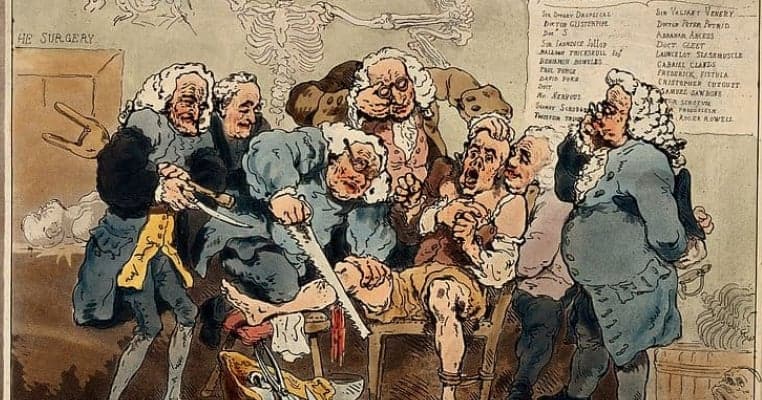Dr Joseph Lister is widely credited with being the ‘father of modern surgery’. He famously called his profession “this bloody and butcherly department of the healing art”. And since Lister was working in the mid-19th century, this was definitely no exaggeration. Surgery at that time was bloody and brutal. What’s more, it wasn’t even that effective! The chances of dying on the operating table were so high that many people only went to hospital as a very last resort.
That so many people died either during or soon after going under the surgeon’s knife is hardly surprising. After all, Victorian-era hospitals were filthy, crowded places. And, while they were often highly-educated, most surgeons of that time had little or no knowledge of germs and infections – in fact, even when they were warned about such matters, they dismissed such warnings as unscientific.
With hindsight, we can look back on the surgical techniques and procedures of the 19th century with a sense of wonder and morbid fascination. Some of the methods employed by the self-proclaimed medical elite seem baffling by today’s standards and it’s a wonder that they helped any patients at all! So, here we have 19 things you need to know about surgery in the 1800s.

19. As many as 1 in 4 patients died as a result of surgery, with infection by far the biggest killer.
Going to the hospital was seen by many as the ultimate last resort. That’s because, far from making you better, going under the surgeon’s knife might just have ended up killing you. Indeed, the fatality rates for Victorian-era surgery were truly terrifying. According to some estimates, around 1 in 10 surgery patients died. And that was in the cleanest operating theaters. In some hospitals, an incredible 1 in 4 patients died, if not on the operating table, then within 24 hours of their operation. Of course, the correlation between cleanliness and death rates went unnoticed for many years!
Some patients died of shock due to the sheer agony of surgery, suffering fatal heart attacks on the operating table. Others bled out, even though Victorian-era surgeons employed a variety of brutal, often effective methods, to stop bleeding. But in most cases, patients died of infection. Indeed, some hospitals in dirty, crowded London even billed patients booked in for surgery for their own burial! On the plus side, you were given a full refund of these funeral costs if you beat the odds and made it off the operating table alive!

